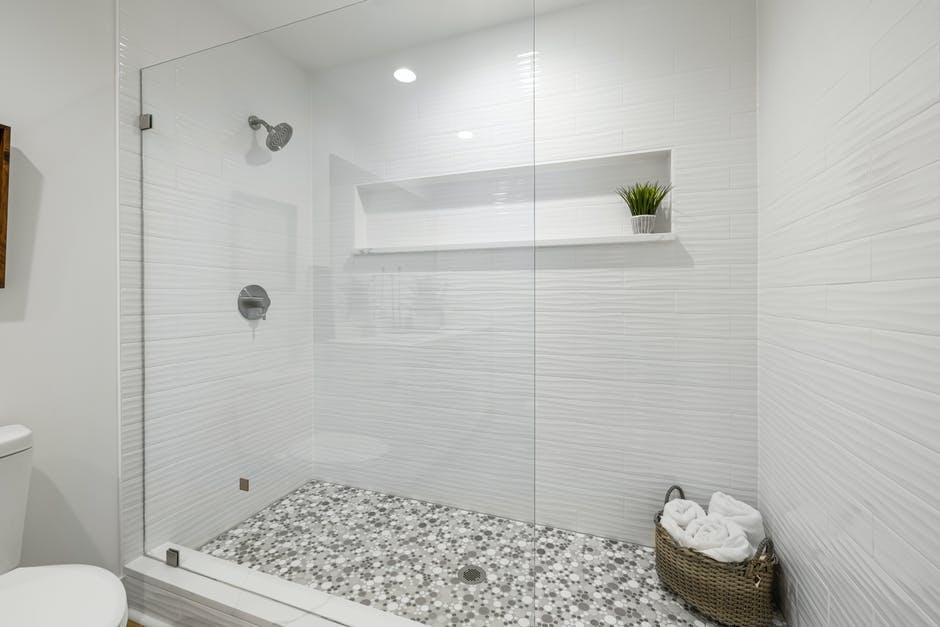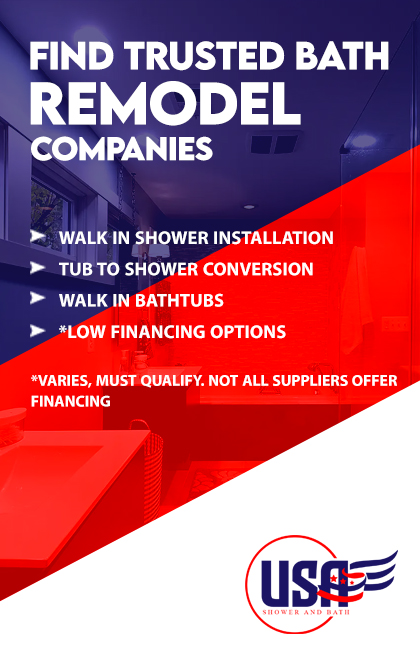
What is the Easiest Way to Remodel Your Shower?
Revamping a tired, old shower can bring a fresh appeal to your entire bathroom. However, the thought of remodeling can be daunting for many, with visions of endless days of construction, dust, and disruption. But what if there was a more straightforward approach? In this blog, we will break down the easiest methods to give your shower a brand-new look without the common hassles of a complete overhaul.
1. Understand Your End Goal
Before embarking on any remodeling project, you need to pinpoint what you want. Are you looking to simply refresh the aesthetics of your current shower, or are you looking for a complete change in its structure and function? Knowing your end goal helps streamline the decision-making process and keeps you from making impulsive, unnecessary changes.
2. Overlay Systems: A Quick Fix
One of the easiest methods for a shower remodel is using overlay systems. These are panels made of various materials like acrylic or PVC that can be installed directly over your existing shower walls. They come in various designs and finishes, allowing you to choose one that aligns with your desired aesthetic.
- Benefits:
- Quick installation – often completed in just a day.
- No need to tear out old tiles or wall.
- Moisture resistant and easy to clean.

3. Shower Kits: An All-In-One Solution
Shower kits are pre-fabricated units that come with everything you need for a shower remodel – the base, walls, and often doors. They are available in multiple sizes, shapes, and finishes.
- Benefits:
- Simplifies the buying process as everything is included.
- Easier installation compared to traditional methods.
- Generally more cost-effective than custom jobs.
4. Re-grouting and Sealing
If your tiles are still in good condition but the grout is discolored, eroded, or moldy, consider re-grouting. Removing old grout and replacing it with new can make your shower look brand new. Once done, always remember to seal the grout to prevent moisture damage and prolong its life.
5. Update Fixtures and Accessories
Sometimes, a significant visual change can come from simply swapping out old fixtures for new. Replace old showerheads, handles, and faucets with modern designs. Adding in-shower storage, like a sleek niche or chrome-finished racks, can also enhance functionality while improving aesthetics.
6. Deep Cleaning: The No-Construction Method
For those who dread any form of construction, sometimes, all your shower needs is a deep clean. Using the right cleaning agents and tools can remove built-up grime, mildew, and soap scum, revealing gleaming tiles and fixtures. Consider hiring a professional cleaning service for the best results.
7. Add a Splash of Color
Painting the bathroom in a fresh, new color can indirectly give your shower a new feel. Waterproof paint for the shower area or tiles can also be used to change the look without replacing anything.
8. Safety First
If you’re thinking of a remodel, it’s also the perfect time to consider safety upgrades. Add non-slip mats or tiles to the floor, install grab bars, and consider a threshold-free shower base to reduce tripping hazards.
9. Consult with a Pro
Even if you’re leaning towards a DIY approach, consulting with a bathroom remodeling professional can offer insights you might not have considered. They can provide advice tailored to your specific bathroom, ensuring you get the best result from your efforts.

Remodeling your shower doesn’t always mean days or weeks of work. With the right approach, you can achieve significant changes in a fraction of the time and often at a much lower cost. Whether you opt for an overlay system, a deep clean, or simply some new fixtures, the path to a refreshed shower is closer than you think.
Trending Shower Remodel Ideas in 2023
As the world of interior design constantly evolves, so do bathroom aesthetics. The shower, once a mere functional corner of the bathroom, has transformed into a focal point, a haven for relaxation and rejuvenation. Let’s dive into some of the most popular shower remodel trends of 2023.
Frameless Glass Enclosures
A minimalistic design approach, frameless glass enclosures exude elegance and sophistication. Without the bulkiness of frames, these showers give bathrooms an airy, open feel. Additionally, they showcase the beauty of the tiles and fixtures within, allowing for more design freedom.
Large Format Tiles
Big, bold tiles are making a statement. Not only do they reduce the number of grout lines, making the space easier to clean, but they also create a sleek, modern appearance. Choices range from matte-finished ceramics to lustrous marbles.
Spa-Inspired Designs
Who wouldn’t want the luxury of a spa in their own home? Features such as rainfall showerheads, body jets, and built-in benches or seats create a luxurious spa-like environment. Many homeowners also opt for steam features, turning the shower into a personal steam room.
Black and Matte Finishes
While chrome and stainless steel have their charm, the contemporary trend leans towards black and matte fixtures. They offer a modern, chic vibe, standing out especially against lighter tiles and walls.
Smart Showers
Technology has inevitably found its way into the bathroom. Smart showers allow users to control water temperature, pressure, and even play music, all via voice control or digital interfaces.

Natural Elements and Greenery
Incorporating plants into shower design can give the space a fresh, organic feel. Whether it’s through moss walls, hanging plants, or small potted greenery, these elements purify the air and provide a serene ambiance.
Recessed Shelves and Niches
Say goodbye to hanging shower caddies. Built-in shelves and niches are a functional design feature that provides storage without compromising on aesthetics. These recessed spaces are ideal for housing shampoos, soaps, and other toiletries neatly.
Mixed Materials
Combining different textures and materials like wood, stone, and tile can create a visually intriguing space. This contrast can break the monotony and add layers of depth to the shower design.
Herringbone and Geometric Tiles
Moving away from the standard subway tile pattern, herringbone and other geometric designs add a touch of creativity and flair. They give the space a dynamic feel and can serve as a design focal point.
Multi-Functional Showerheads
The functionality of showerheads has expanded vastly. From detachable heads and mist functions to LED lights that change with temperature, the shower experience can be as simple or luxurious as one desires.
Shower remodeling trends of 2023 bring together functionality, technology, and aesthetics, transforming bathrooms into personalized sanctuaries. Whether you’re drawn to the simplicity of large tiles and frameless glass or the luxury of spa-inspired designs, there’s a trend out there to match every preference and style.

How Much Does an Easy Shower Remodel Cost?
Shower remodels can vary in complexity and, consequently, in cost. However, many homeowners wonder about the average expenses when it comes to an “easy” shower remodel. If by easy we mean a straightforward swap-out of existing fixtures and maybe a retiling, then there’s a ballpark figure to be considered. Yet, remember that the specific costs can vary based on your geographical location, the quality of materials chosen, and labor rates.
Basic Shower Remodel Costs
Materials: The type of tiles or panels you choose for your shower will majorly determine the material costs. On average:
- Ceramic tiles: $0.50 to $35 per square foot.
- Porcelain tiles: $3 to $10 per square foot.
- Stone tiles (like granite or marble): $6 to $15 per square foot.
- Acrylic or fiberglass shower panels: $300 to $1,000 per unit.
Labor: Installation is another significant chunk of your remodeling budget. The labor cost for a shower remodel typically runs between $1,000 to $1,500, with tiling being the most labor-intensive part. If you’re retiling your shower space, expect to pay a tiler anywhere from $25 to $50 per hour.
Fixtures and Fittings: These could include:
- Showerhead: $30 to $500, with smart or multi-functional showerheads being more expensive.
- Faucets and controls: $50 to $1,000 depending on the brand and functionality.
- Glass doors or enclosures: $600 to $1,300.
Other Potential Costs
Some hidden costs might arise during a remodel, especially if you’re working on an older bathroom. These could include:
- Waterproofing: $500 to $1,000 if you’re ensuring your shower area is properly sealed.
- Plumbing adjustments: If you need to move water lines or adjust plumbing, this can add between $300 to $1,500.
- Old fixture removal: Getting rid of your old shower setup can cost between $100 to $500.
The Average Cost for an Easy Remodel
Given these factors, an easy or basic shower remodel can range from $2,500 to $7,000. However, it’s essential to get a quote from a local contractor or bathroom remodeling company to get an accurate estimate for your specific needs and region.
While remodeling your shower might seem like a daunting financial endeavor, understanding the breakdown of potential costs can help in planning and budgeting. It’s always wise to keep a buffer in your budget for unexpected expenses. Still, with careful planning and a keen eye on your choices, an “easy” remodel can be both satisfying and affordable.

DIY or Hire a Professional for a Shower Remodel?
When considering a shower remodel, the decision between taking on a DIY project or hiring a professional is one that homeowners frequently grapple with. Both choices come with their advantages and disadvantages. Let’s dive into these to provide a clearer perspective.
The DIY Route: Pros and Cons
Pros:
- Cost Savings: Taking on a shower remodel yourself can potentially save you labor costs, which make up a considerable chunk of a renovation project.
- Personal Satisfaction: There’s a certain pride and satisfaction in completing a home project on your own.
- Flexibility: You have the freedom to work at your own pace, make changes mid-project, and be in complete control.
Cons:
- Potential Mistakes: Without the requisite experience, it’s easy to make errors, which could end up costing more in the long run.
- Time Consuming: A DIY project can take longer, especially if it’s your first time or if you can only work on it during weekends.
- No Guarantees: Unlike professionals, DIY projects don’t come with warranties or guarantees.
Hiring a Professional: Pros and Cons
Pros:
- Expertise: Professionals bring experience and skill to the table. They can foresee issues you might not consider and provide solutions based on their past experiences.
- Speed: Contractors work on a timeline. With their team and resources, they can often complete the project faster than a DIY approach.
- Quality Assurance: Most professional renovations come with a warranty or guarantee of their work. This gives peace of mind.
- Comprehensive Work: Professionals ensure that all aspects, including plumbing and waterproofing, are up to standard, thereby minimizing future issues.
- Safety: Professionals are trained to handle tools and materials safely, reducing the risk of accidents.
Cons:
- Cost: Hiring a professional involves labor costs, which can sometimes be a significant portion of your budget.

The Importance of Hiring a Professional
While the DIY route might seem tempting due to potential cost savings, there are crucial reasons why hiring a professional can be a wise investment, especially for a project as significant as a shower remodel:
- Complex Tasks: Shower remodeling isn’t just about changing tiles or fixtures. It often involves intricate tasks like plumbing adjustments, waterproofing, and electrical work for lighting or digital fixtures. A minor error in any of these can lead to significant problems, from leaks to electrical hazards.
- Materials and Tools: Professionals have access to the right tools and can offer advice on the best materials for your budget and design vision.
- Future Savings: While the initial cost might be higher, hiring a professional can prevent costly mistakes and future repairs, offering long-term savings.
- Value Addition: A professionally remodeled shower can significantly boost the value of your home, especially if you plan on selling in the near future.
While DIY projects have their charm and can be suitable for specific tasks, a shower remodel’s complexity might make it more suitable for professionals. It’s essential to weigh the pros and cons and evaluate your own skills, time, and budget constraints before making a decision. Ultimately, the choice should lead to a safe, durable, and aesthetically pleasing result.
Top 10 Tips to Ensure Your Shower Remodel Runs Smoothly
Remodeling a shower can seem daunting. Whether you’re going the DIY route or hiring professionals, the following tips can help you ensure that the project proceeds without major hitches.
1. Set a Clear Budget
Before diving into the project, have a clear understanding of your financial limits. Factor in a contingency amount for unexpected expenses. This way, you can make decisions more confidently without fearing overshoots.
2. Plan Ahead
While spontaneity can be fun, a shower remodel benefits from thorough planning. Outline each step, from demolition to the finishing touches, so you have a roadmap to follow.
3. Choose Quality Materials
It might be tempting to save money on cheaper materials, but investing in quality will save you from frequent replacements and repairs. Waterproofing materials, tiles, and fixtures should be durable and suited to your region’s water quality and climate.

4. Prioritize Waterproofing
Water leakage can cause significant damage. Ensure that waterproofing is a top priority in your remodel. Using backer boards, waterproof membranes, and high-quality sealants will pay off in the long run.
5. Stay Updated on Trends
While you’ll want a design that’s timeless, being aware of the latest trends in shower designs can inspire choices that add a modern touch. From matte black fixtures to open concept showers, staying updated can benefit the final look.
6. Ensure Proper Ventilation
Prevent mold and mildew by ensuring your bathroom has adequate ventilation. An efficient exhaust fan can make a significant difference in maintaining the longevity of your new shower.
7. Hire Reputed Professionals
If you’re going the professional route, do thorough research. Look for contractors with solid references, good reviews, and relevant experience. An expert can make the process smoother and more efficient.
8. Stay Involved
Even if you’ve hired professionals, stay involved in the project. Regular check-ins and being available for questions can prevent misunderstandings and ensure that your vision is realized accurately.
9. Prepare for Inconveniences
A shower remodel can mean several days or even weeks without access to the shower. Make alternate arrangements, and prepare your household for this temporary inconvenience.
10. Document Everything
Maintain a project diary or folder. Store quotes, receipts, and a record of all communications. This not only helps in tracking expenses but can also be useful if disputes arise or for future reference when maintenance is needed.
A successful shower remodel is a blend of meticulous planning, wise decision-making, and efficient execution. By following the tips above, homeowners can pave the way for a remodel that not only meets but exceeds their expectations, all while ensuring a smooth process from start to finish.

What Material Should You Use for Your New Shower?
Selecting the right material for your shower is crucial. Not only does it define the aesthetics of your bathroom, but it also determines the longevity, maintenance requirements, and overall experience of using the space. Here’s a breakdown of some of the most popular, durable, and aesthetically pleasing materials to consider:
1. Ceramic and Porcelain Tiles
These are the most commonly used materials for shower walls, and for good reason. They come in a vast range of colors, patterns, and sizes. Both ceramic and porcelain tiles are durable and water-resistant. Porcelain, being denser, is slightly more water-resistant and durable than ceramic, but both are excellent choices.
2. Glass Tiles
Glass tiles give a modern and sleek look to a shower. They reflect light, making your shower (and even the entire bathroom) feel brighter and more spacious. While they are generally more expensive than ceramic or porcelain tiles, they add a touch of elegance.
3. Natural Stone
Natural stone, such as marble, granite, slate, or travertine, offers an unmatched luxurious appeal. These materials are unique, ensuring that no two showers look exactly alike. However, they require more maintenance, like regular sealing, to prevent staining and water damage.
4. Acrylic and Fiberglass
Both materials are prefabricated into single-piece units or larger panels, making them a popular choice for quick and straightforward installations. They are budget-friendly, lightweight, and easy to clean. While they might not have the high-end look of tiles or natural stone, their simplicity and functionality can’t be overlooked.
5. Solid Surface
Materials like Corian or Swanstone fall under the “solid surface” category. They are made from a blend of natural minerals and pure acrylic resin, providing a non-porous and seamless look. They resist mold and mildew, are durable, and available in various colors and patterns.
6. Cultured Marble
Cultured marble is a blend of marble dust and resin, offering the look of genuine marble without the hefty price tag. It’s easy to clean, resistant to staining, and gives a sleek, seamless appearance since it’s usually formed into a single sheet.
7. Stainless Steel
While not the most traditional choice for a shower, stainless steel has gained popularity, especially in modern and industrial bathroom designs. It’s incredibly durable, resistant to corrosion and rust, and brings a unique look to the space.

Considerations When Choosing Materials
When selecting the right material for your shower, consider the following factors:
- Budget: Materials like natural stone or glass tiles tend to be on the pricier end, while acrylic and fiberglass are more budget-friendly.
- Maintenance: Some materials, like natural stone, require regular maintenance. If you’d prefer something more low-maintenance, solid surface or ceramic tiles might be a better fit.
- Aesthetics: Consider the overall look and feel you want for your bathroom. Materials play a significant role in defining the space’s ambiance.
- Lifespan and Durability: If you’re looking for a long-lasting solution, materials like porcelain, stainless steel, and natural stone are renowned for their durability.
The material you choose for your shower can greatly influence the functionality and aesthetics of your bathroom. With the range of options available, homeowners can find a balance between style, budget, and practicality, ensuring that their new shower not only looks fantastic but stands the test of time.
Understanding the Importance of Proper Waterproofing
Waterproofing is a critical step in any shower remodel. Though the primary purpose of a shower is to get wet, it’s imperative that the water stays where it’s supposed to be. Proper waterproofing prevents costly water damage, mold growth, and ensures the longevity of your shower remodel. Here’s a closer look:
The Layers Beneath the Surface
While the visible materials of your shower are essential for aesthetics and functionality, the layers you don’t see play a crucial role in maintaining the integrity of your bathroom. Behind those shiny new tiles or that elegant slab of natural stone, there should be a robust waterproofing system.
Waterproofing Membranes
A waterproofing membrane is a thin layer of water-tight material applied over the surface, ensuring no water seeps through the walls or floor. There are various types of waterproofing membranes, from liquid applications to sheet membranes. The choice depends on your shower’s specific requirements and the materials used.
Importance of Proper Drainage
It’s not just about keeping water out of the walls and floor; it’s also about ensuring it exits the shower efficiently. Proper drainage prevents standing water, which can lead to mold growth and degrade sealants. Ensure that your shower floor has a slight slope towards the drain. Also, consider upgrading to a linear drain or a tile-insert drain, which can handle larger water volumes and offer a sleeker appearance.

Testing Before Tiling
Before putting up that final layer of tile or other material, it’s a good practice to do a water test. This involves blocking the drain and filling the shower base with water. Mark the water level and leave it for 24 hours. If the water level drops, there might be a leak, and it’s vital to address this before moving forward.
Regular Maintenance
Even with the best waterproofing, regular maintenance is key. Inspect sealants and grout lines periodically and re-seal as required. Ensure there’s no standing water after showers, and consider investing in a good-quality squeegee to keep surfaces dry. Regularly cleaning drains and checking for any signs of water damage outside the shower area can help in early detection of potential issues.
Benefits of Proper Waterproofing
- Cost Savings: While there might be an initial expense, proper waterproofing can save homeowners thousands in potential water damage repairs.
- Increased Home Value: A well-maintained and water-tight bathroom can be a selling point if you ever decide to put your home on the market.
- Health Benefits: Preventing mold and mildew growth means a healthier living environment, as these can cause respiratory issues and other health problems.
- Peace of Mind: Knowing that your bathroom is protected from potential water damage gives homeowners peace of mind.
While materials, design, and aesthetics are essential in a shower remodel, the unseen elements, especially waterproofing, are the unsung heroes ensuring that your new space remains beautiful, functional, and damage-free for years to come.
